(Re)Discover Early Met Collection Catalogues at Watson Library
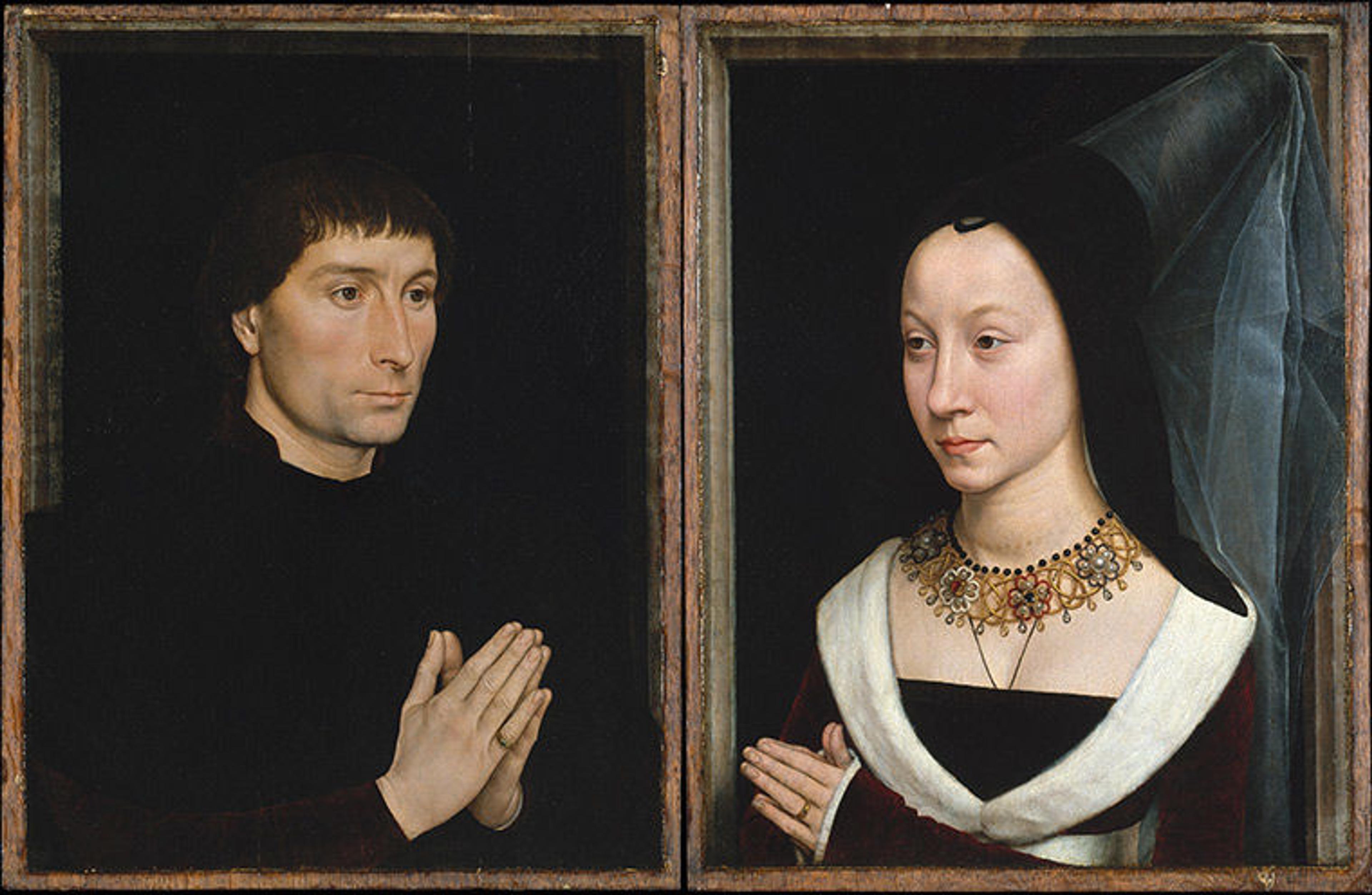
Hans Memling (Netherlandish, 1465–1494). Tommaso di Folco Portinari (1428–1501); Maria Portinari (Maria Maddalena Baroncelli, born 1456), ca. 1470. Oil on wood, (.626, Tommaso) overall 17 3/8 x 13 1/4 in. (44.1 x 33.7 cm), painted surface 16 5/8 x 12 1/2 in. (42.2 x 31.8 cm); (.627, Maria) overall 17 3/8 x 13 3/8 in. (44.1 x 34 cm); painted surface 16 5/8 x 12 5/8 in. (42.2 x 32.1 cm). The Metropolitan Museum of Art, New York, Bequest of Benjamin Altman, 1913 (14.40.626–27)
This post focuses on the collection catalogues of five early Met collectors—Henry G. Marquand, Catharine Lorillard Wolfe, George A. Hearn, Benjamin Altman, and Irwin Untermyer—who may not be as widely-known today as J.P. Morgan, Cornelius Vanderbilt, or Samuel Putnam Avery. Owned and digitized by Watson Library, these catalogues provide basic details about the works of art, their provenance information, and brief biographies of the artists. While mostly unillustrated, these records are essential in understanding The Met's collecting history and the way art was written about at the time of the Museum's founding and in its early decades.
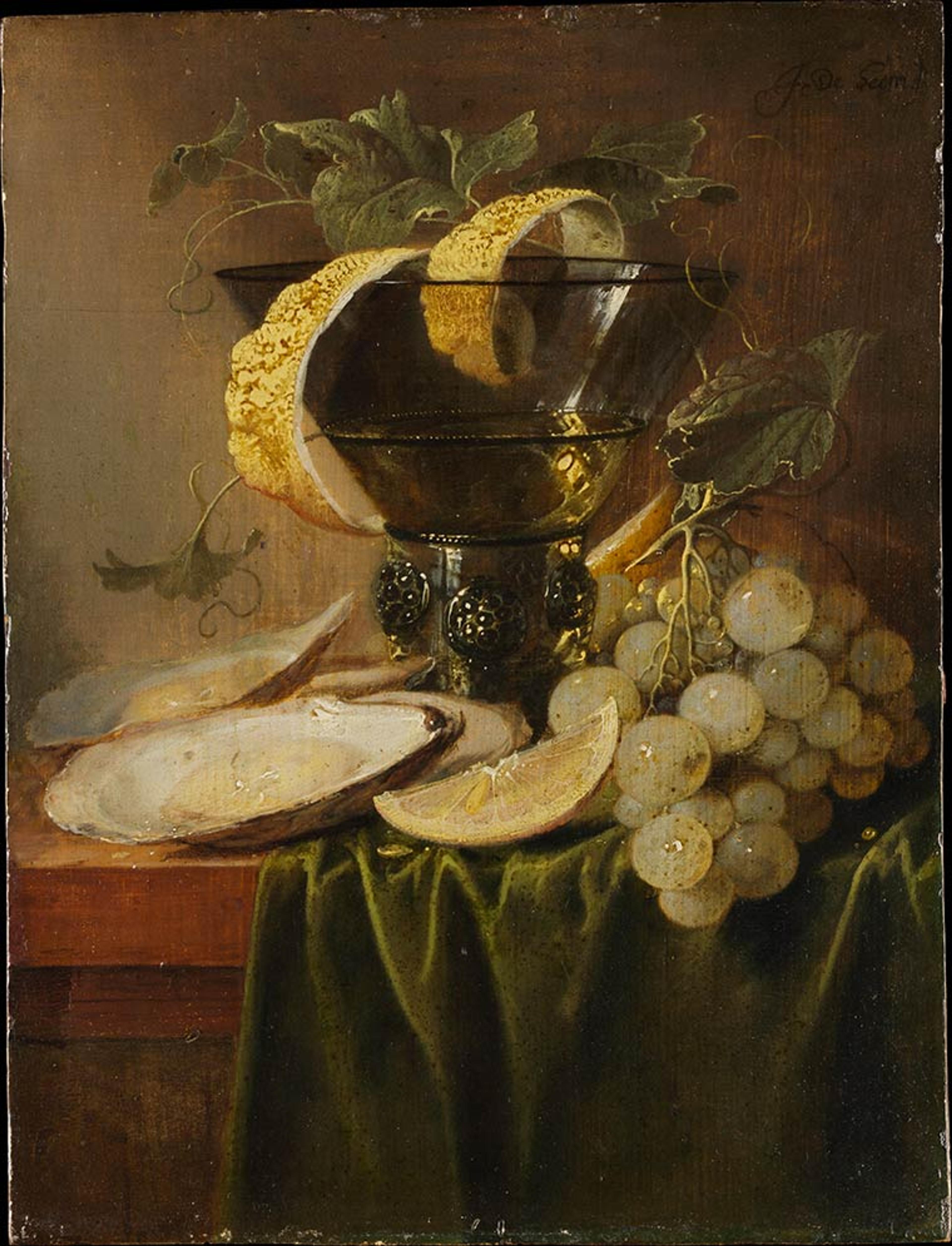
Jan Davidsz de Heem (Dutch, 1606–1683/84). Still Life with a Glass and Oysters, ca. 1640. Oil on wood, 9 7/8 x 7 1/2 in. (25.1 x 19.1 cm). The Metropolitan Museum of Art, New York, Purchase, 1871 (71.78)
Henry Gurdon Marquand (1819–1902)
New York financier Henry G. Marquand became an early Trustee of The Met in 1871 and its second President in 1889. He made generous contributions of paintings, antiquities, and decorative art objects to the Museum, including a donation of thirty-five Old Master paintings of the Dutch, Flemish, Italian, and English schools in 1889. These works are described in the latter half of the following catalogue from 1897: Pictures by Old Masters in Eastern Gallery No. 1…. The Museum's Founding Purchase of 1871, which includes the very first objects acquired by The Met (see above image), is also detailed in the first section of this catalogue.
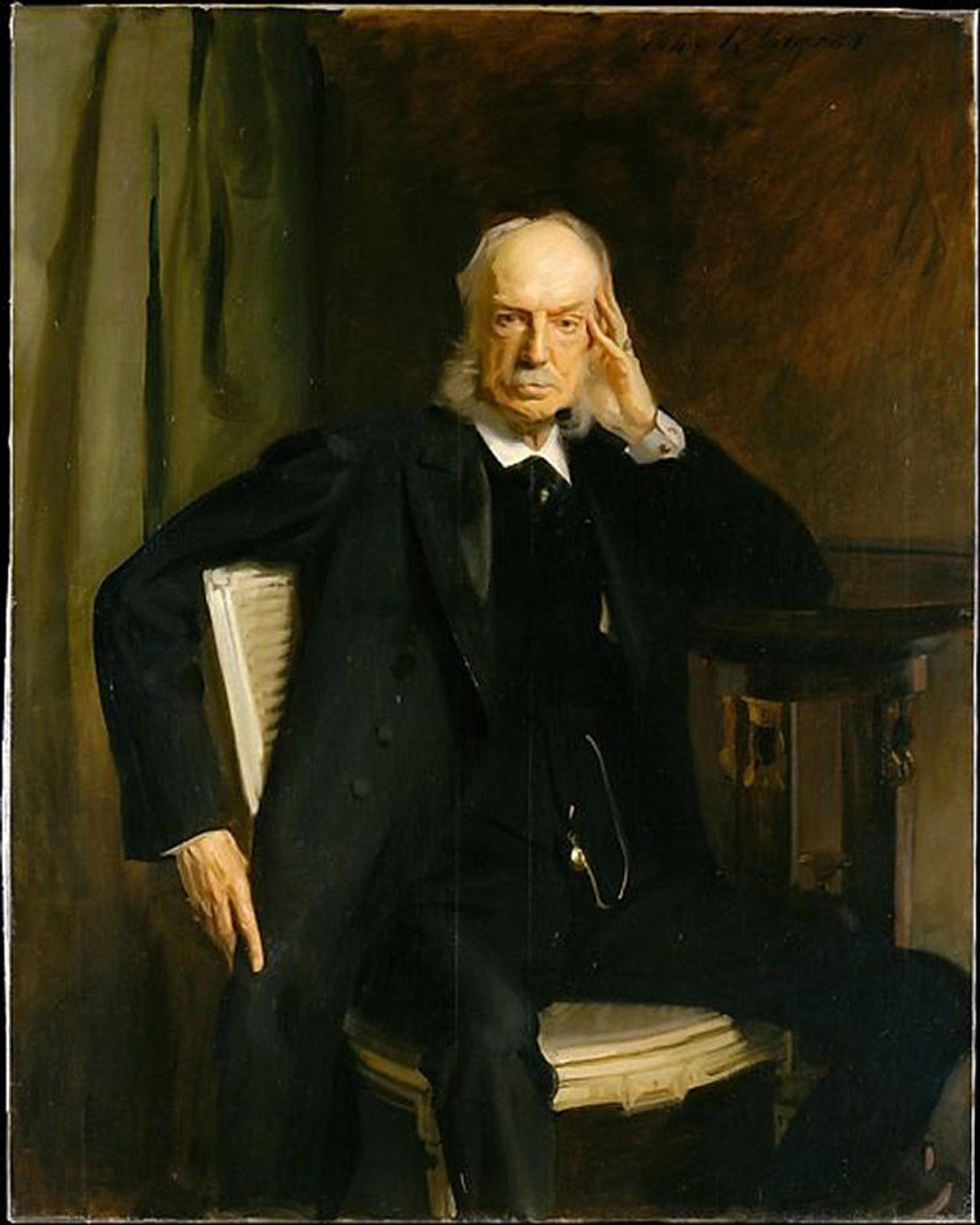
John Singer Sargent (American, 1856–1925). Henry G. Marquand, 1897. Oil on canvas, 52 x 41 3/4 in. (132.1 x 106 cm). The Metropolitan Museum of Art, New York, Gift of the Trustees, 1897 (97.43)
Highlights of the Marquand Old Master paintings gift include works by Van Dyck, Hals, Rembrandt, and Lippi, to name a few.

Rembrandt (Rembrandt van Rijn) (Dutch, 1606–1669). Portrait of a Man, ca. 1655–60. Oil on canvas, 32 7/8 x 25 3/8 in. (83.5 x 64.5 cm). The Metropolitan Museum of Art, New York, Marquand Collection, Gift of Henry G. Marquand, 1890 (91.26.7)
The Marquand collection also includes Vermeer's Young Woman with a Water Pitcher, the first work by this artist to enter an American collection. As with some of The Met's other early acquisitions, a few objects in the Marquand gift have had their attributions changed since their arrival at the Museum. For instance, in the 1897 catalogue, Lippi's Portrait of a Woman with a Man at a Casement was misidentified as a work by Masaccio, Anthony van Dyck's Portrait of a Man was attributed to Rubens, and Petrus Christus' The Lamentation was thought to be by Van Eyck.
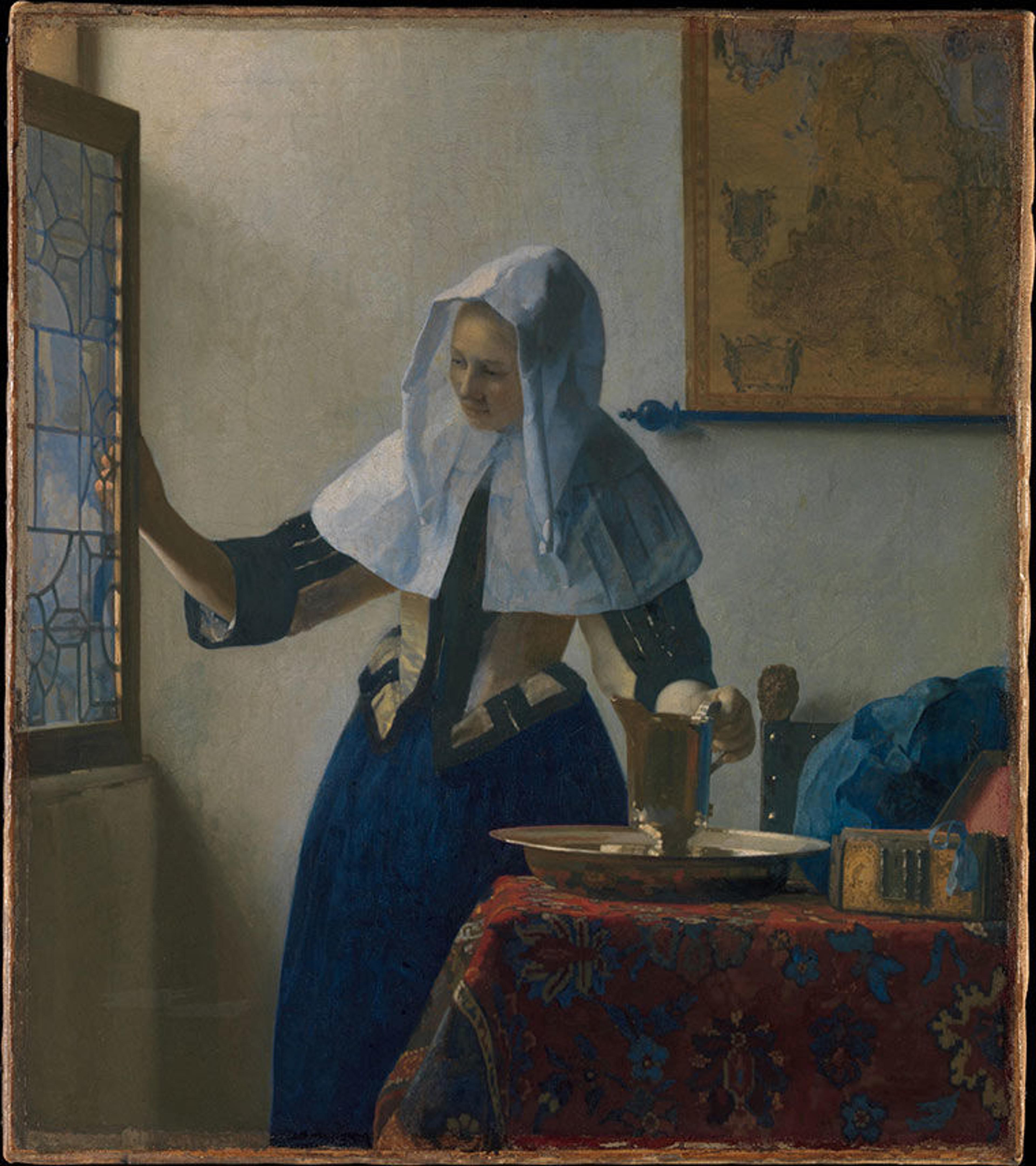
Johannes Vermeer (Dutch, 1632–1675). Young Woman with a Water Pitcher, ca. 1662. Oil on canvas, 18 x 16 in. (45.7 x 40.6 cm). The Metropolitan Museum of Art, New York, Marquand Collection, Gift of Henry G. Marquand, 1889 (89.15.21)
Another interesting reattribution is one concerning Girl with Cherries, a work now attributed to Marco d'Oggiono, but ascribed to Leonardo in the 1897 catalogue.
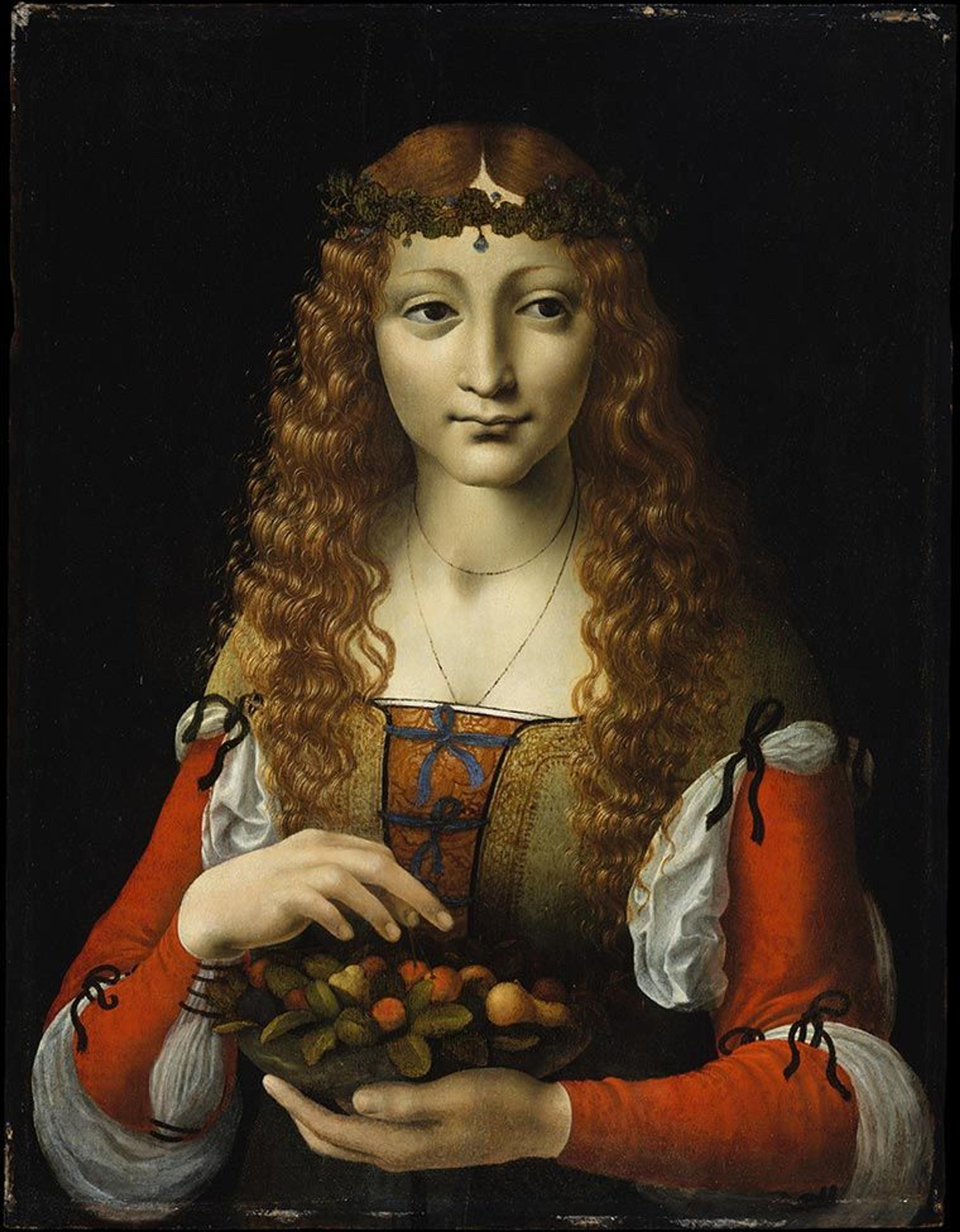
Attributed to Marco d'Oggiono (Italian, 1467–1524). Girl with Cherries, ca. 1491–95. Oil on wood, 19 1/4 x 14 3/4 in. (48.9 x 37.5 cm). The Metropolitan Museum of Art, New York, Marquand Collection, Gift of Henry G. Marquand, 1890 (91.26.5)
Catharine Lorillard Wolfe (1828–1887)
New York philanthropist and art collector Catharine Lorillard Wolfe was the first female benefactor of The Met. Wolfe bequeathed her entire collection of oil paintings and watercolor drawings, along with an endowment of $200,000 to be used for the preservation and growth of the collection, to the Museum in 1887. The Wolfe objects are discussed in the 1904 Illustrated Catalogue: Paintings in the Metropolitan Museum of Art, New York and in the 1889 and 1897 Wolfe collection catalogues, which contain excerpts of Wolfe's will.
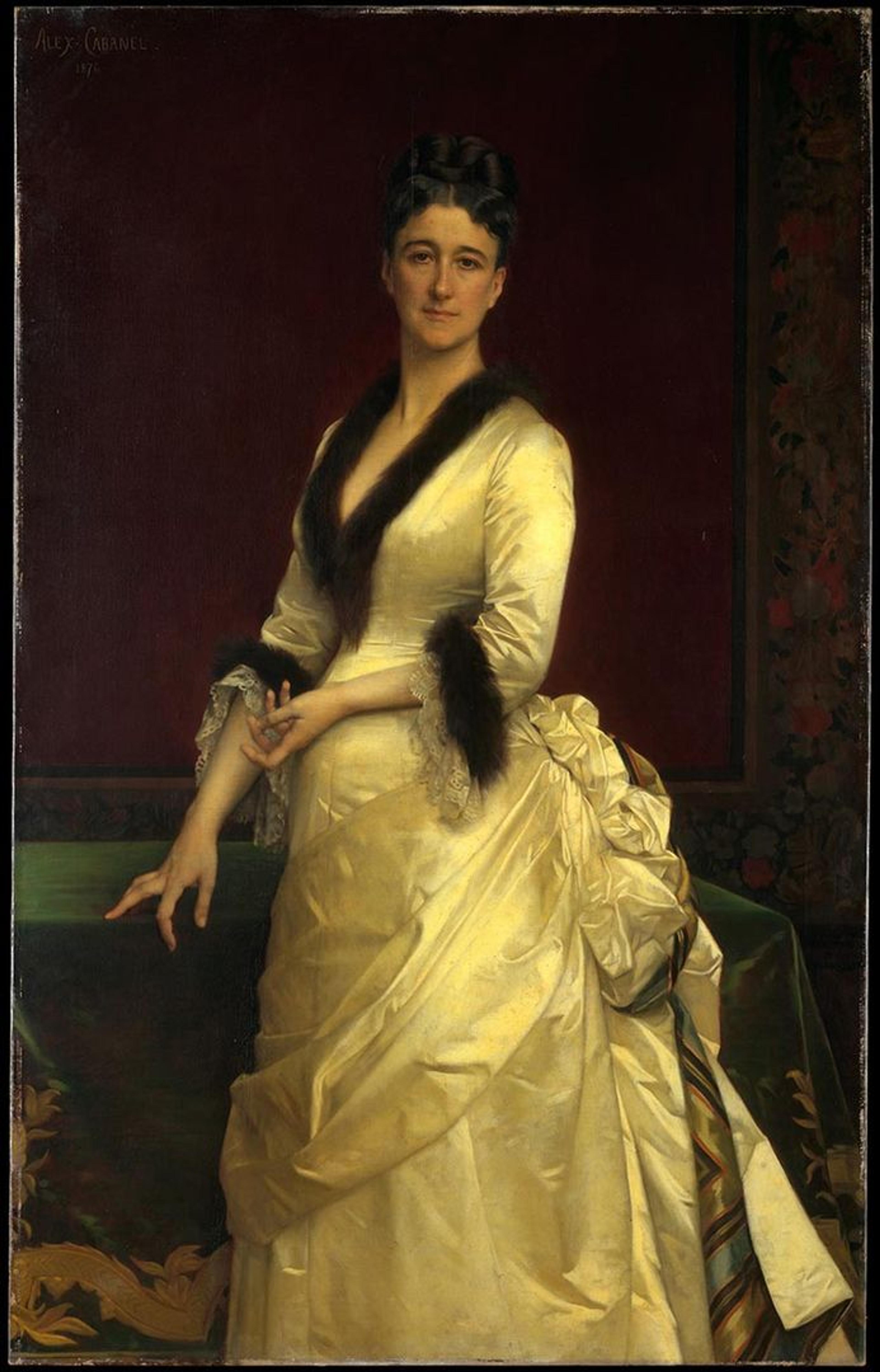
Alexandre Cabanel (French, 1823–1889). Catharine Lorillard Wolfe (1828–1887), 1876. Oil on canvas, 67 1/2 x 42 3/4 in. (171.5 x 108.6 cm). The Metropolitan Museum of Art, New York, Catharine Lorillard Wolfe Collection, Bequest of Catharine Lorillard Wolfe, 1887 (87.15.82)
Wolfe's bequest includes works by Bouguereau, Gérôme, Leighton, Vernet, Bonheur, and Corot. In their report on the opening of the Wolfe galleries, The New York Times advised visitors to arrive at the Museum by three o'clock, lest they should miss some of the paintings on the upper tier due to poor lighting, the height of the walls, and a small skylight.

Rosa Bonheur (French, 1822–1899). A Limier Briquet Hound, ca. 1856. Oil on canvas, 14 1/2 x 18 in. (36.8 x 45.7 cm). The Metropolitan Museum of Art, New York, Catharine Lorillard Wolfe Collection, Bequest of Catharine Lorillard Wolfe, 1887 (87.15.77)
The Wolfe Fund has enabled The Met to acquire works by major artists, such as David, Ingres, Turner, Delacroix, Renoir, Whistler, Cézanne, Manet, and Sargent.

Jacques Louis David (French, 1748–1825). The Death of Socrates, 1787. Oil on canvas, 51 x 77 1/4 in. (129.5 x 196.2 cm). The Metropolitan Museum of Art, New York, Catharine Lorillard Wolfe Collection, Wolfe Fund, 1931 (31.45)
George A. Hearn (1835–1913)
New York merchant George Hearn was a Met Trustee from 1903 to 1913. He made gifts to The Met of both European and American paintings, including works by Gainsborough, Constable, Whistler, Hassam, and Sargent. An enthusiast of contemporary American art, he also established a fund for the purchase of paintings by living American artists. The Hearn collection is described in The George A. Hearn Gift To The Metropolitan Museum of Art in the City of New York in the Year MCMVI (1906), which contains an interesting correspondence between Hearn and the President and Trustees of The Met setting forth the conditions under which Hearn's gift and endowment were made and accepted.
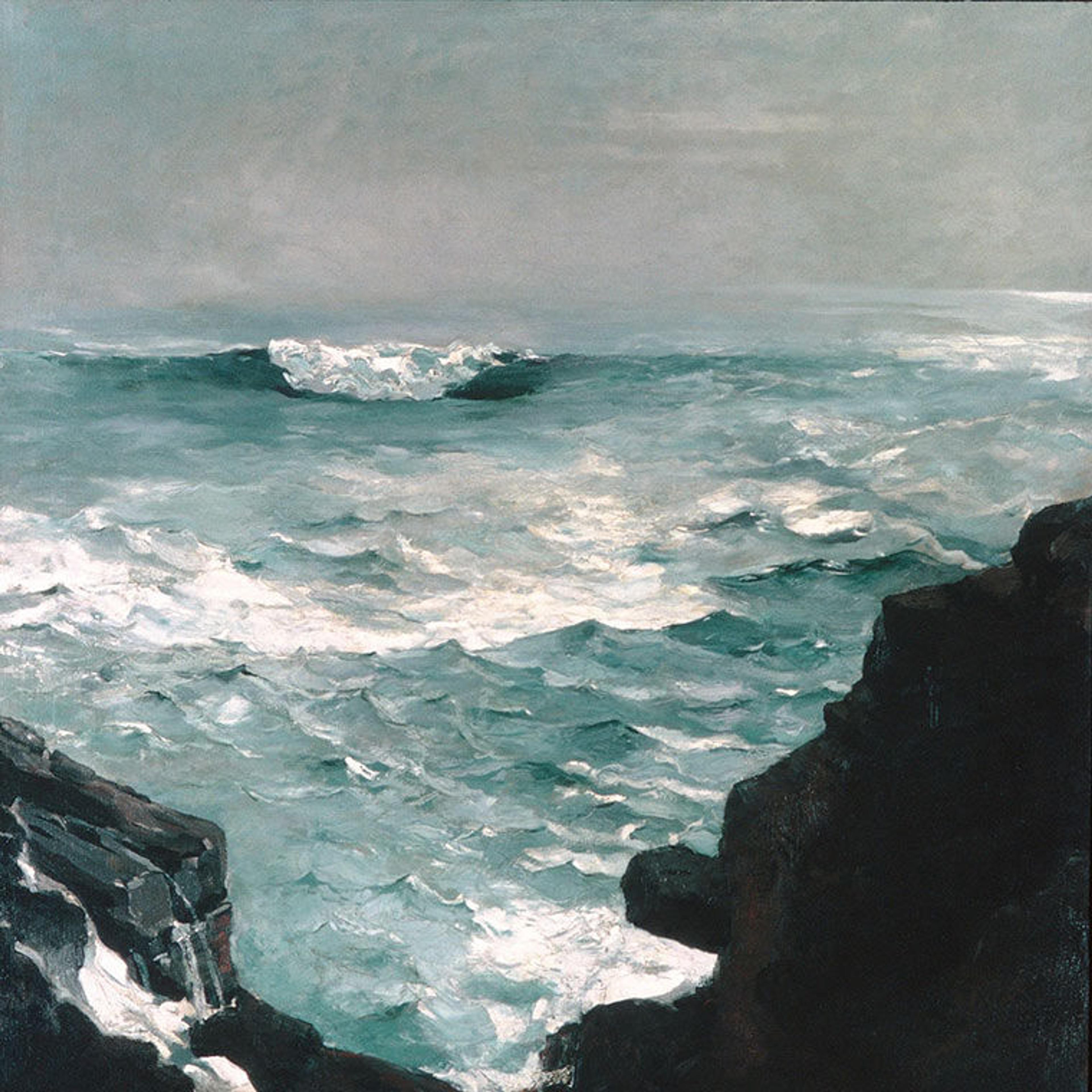
Winslow Homer (American, 1836–1910). Cannon Rock, 1895. Oil on canvas, 40 x 40 in. (101.6 x 101.6 cm). The Metropolitan Museum of Art, New York, Gift of George A. Hearn, 1906 (06.1281)
The Hearn collection contains several works by Winslow Homer, including many of his seascapes, which he painted from the coast of southern Maine. In describing one such painting—Cannon Rock—the 1906 Hearn catalogue states, "This is but a passage in the great Ocean Symphony which he [Homer] has given us in a dozen canvases, and a sight of it at once carries the mind to other impressions of the power and infinity of the sea which he has made known to us."
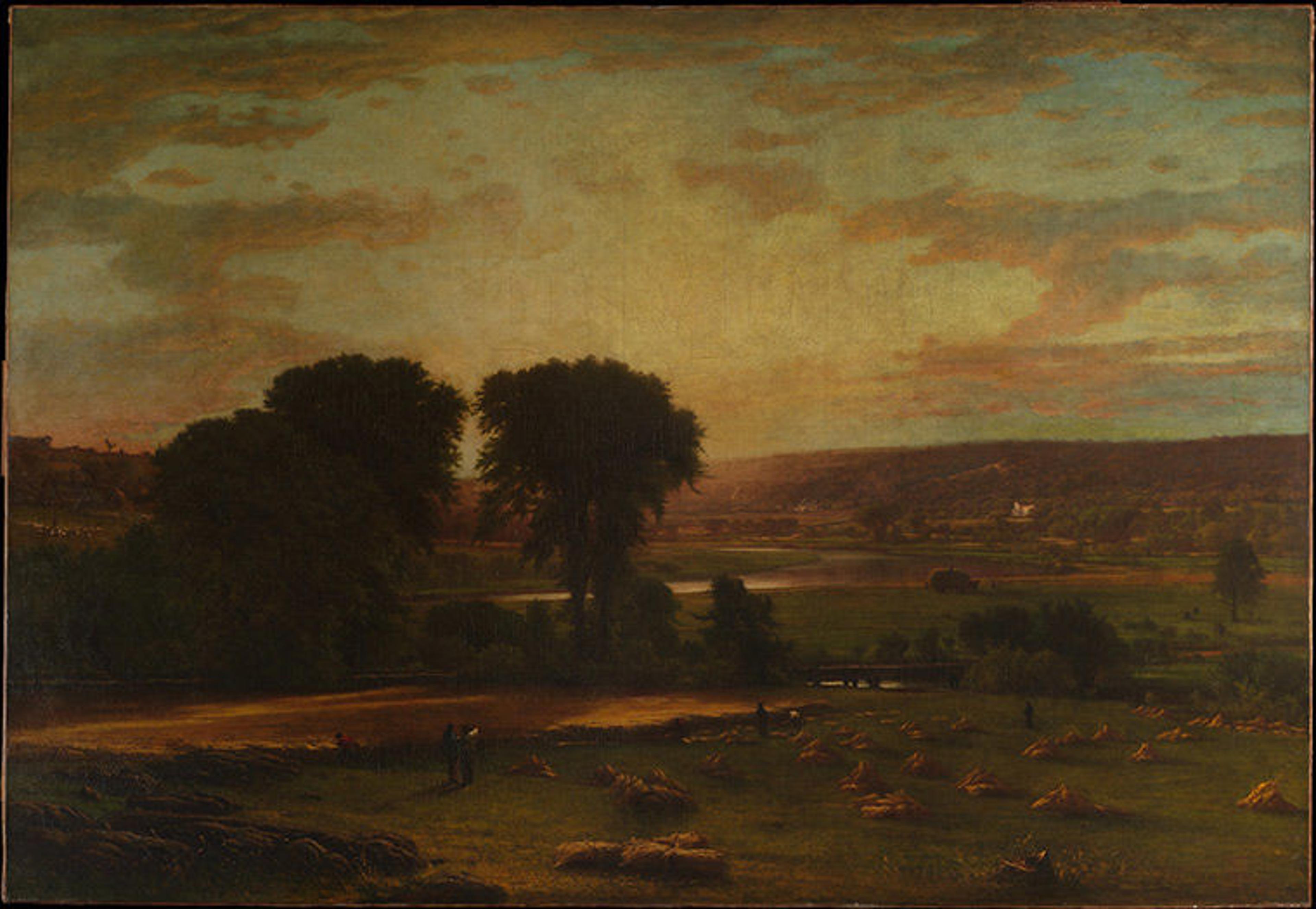
George Inness (American, 1825–1894). Peace and Plenty, 1865. Oil on canvas, 77 5/8 x 112 3/8 in. (197.2 x 285.4 cm). The Metropolitan Museum of Art, New York, Gift of George A. Hearn, 1894 (94.27)
The first and the last American paintings Hearn donated to The Met, and thus bookending his collection, are considered masterpieces by their respective artists, George Inness and Edwin Austin Abbey.

Edwin Austin Abbey (American, 1852–1911). "King Lear," Act I, Scene I, 1898. Oil on canvas, 54 1/4 x 127 1/4 in. (137.8 x 323.2 cm). The Metropolitan Museum of Art, New York, Gift of George A. Hearn, 1913 (13.140)
Benjamin Altman (1840–1913)
Benjamin Altman was an art collector and owner of the B. Altman and Company department store. He bequeathed his entire collection of paintings, porcelains, tapestries, Limoges enamels, bronzes, furniture, and more to The Met in 1913. The 1914 Handbook of the Benjamin Altman Collection praises Altman's bequest for both the range and quality of its objects, calling it one of the greatest gifts ever made by an individual to the Museum.
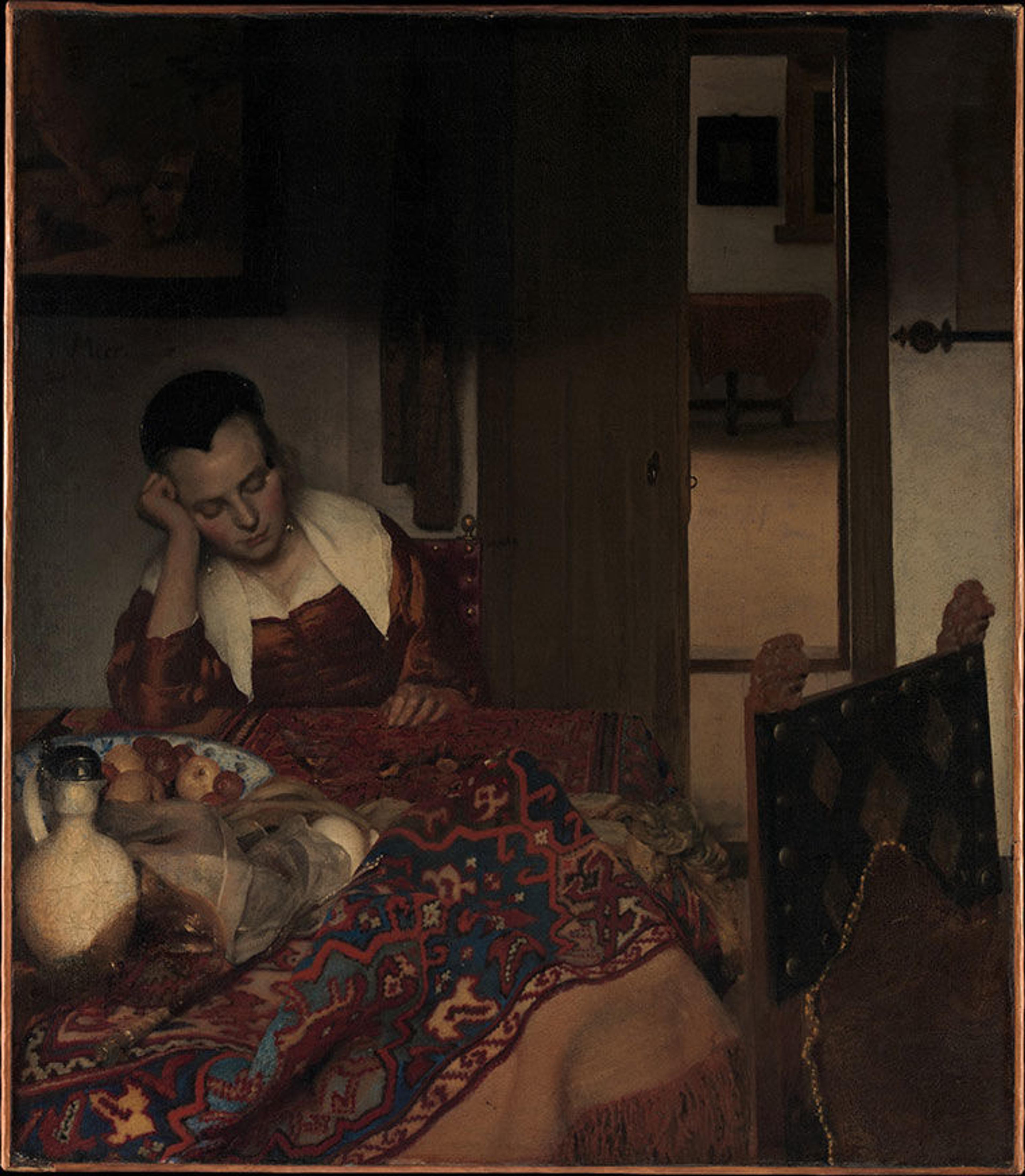
Johannes Vermeer (Dutch, 1632–1675). A Maid Asleep, ca. 1656–57. Oil on canvas, 34 1/2 x 30 1/8 in. (87.6 x 76.5 cm). The Metropolitan Museum of Art, New York, Bequest of Benjamin Altman, 1913 (14.40.611)
One of the many highlights of the Altman collection is Vermeer's A Maid Asleep, which at the time of the Altman bequest was one of eight authenticated paintings by Vermeer in the United States. The Met currently owns five Vermeer paintings.
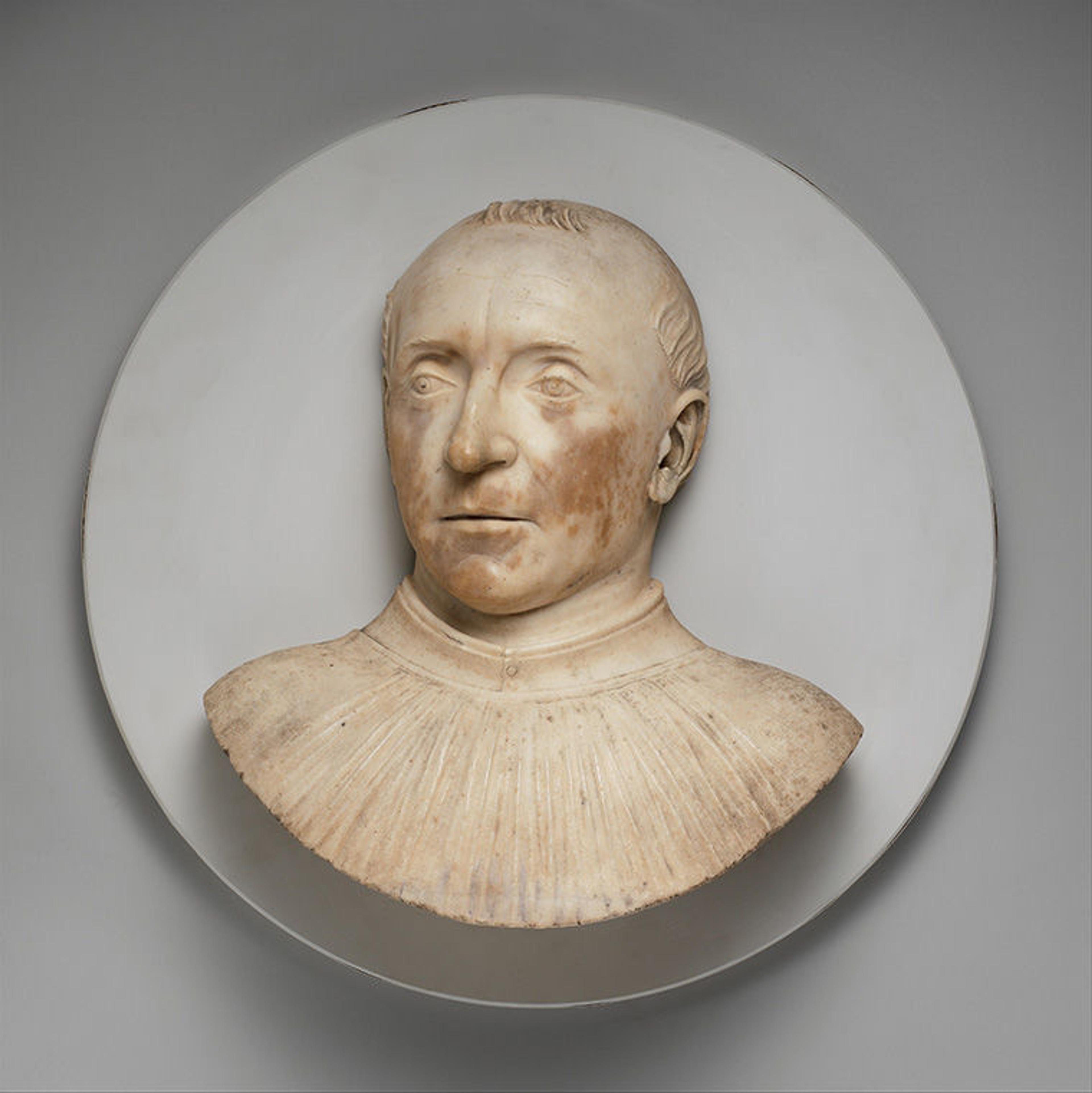
Mino da Fiesole (Mino di Giovanni) (Italian, 1429–1484). Cardinal Guillaume d'Estouteville (1403–1483), Bishop of Ostia and Cardinal Archbishop of Rouen, third quarter 15th century. Marble, Overall (wt confirmed): 14 1/8 in., 47lb. (35.9 cm, 21.3191kg). The Metropolitan Museum of Art, New York, Bequest of Benjamin Altman, 1913 (14.40.674)
In addition to paintings by Botticelli, Memling, Dürer, Titian, Velázquez, Van Dyck, and Rembrandt, Altman's bequest includes an impressive collection of sculpture comprising works by Mino da Fiesole and Luca della Robbia, among others. Lastly, no discussion of Altman's collection would be complete without including reference to The Adoration of the Shepherds by the Workshop of the Master of the High Foreheads.
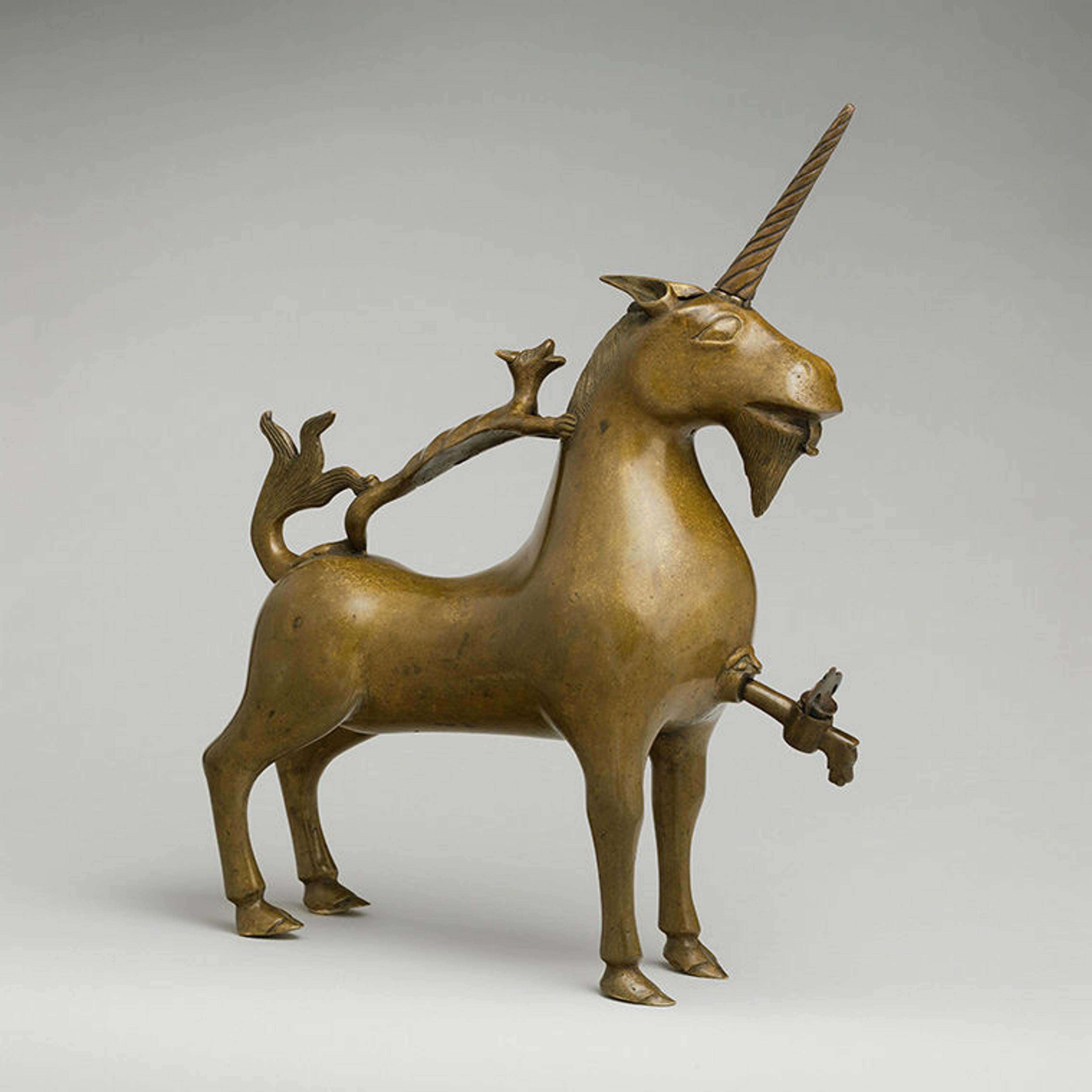
(German). Aquamanile in the Form of a Unicorn, ca. 1425–50. Copper alloy, Overall to tip of horn: 15 1/2 × 11 1/2 × 4 7/16 in., 6.8 lb. (39.4 × 29.2 × 11.3 cm, 3085g). The Metropolitan Museum of Art, New York, Gift of Irwin Untermyer, 1964 (64.101.1493)
Irwin Untermyer (1886–1973)
Irwin Untermyer was a judge and art collector who gave The Met—both by gift and bequest—an exceptional collection of English and Continental decorative arts. A search in The Met Collection for "Gift of Irwin Untermyer" shows the range of objects he donated to the Museum, including bronzes, metalwork, silver, sculpture, Meissen porcelain, pottery, faience, enamel, tapestries, textiles, and furniture. A search in the library catalogue for "Irwin Untermyer collection" brings up all the Untermyer collection catalogues we own, including Highlights of the Untermyer Collection of English and Continental Decorative Arts (1977).
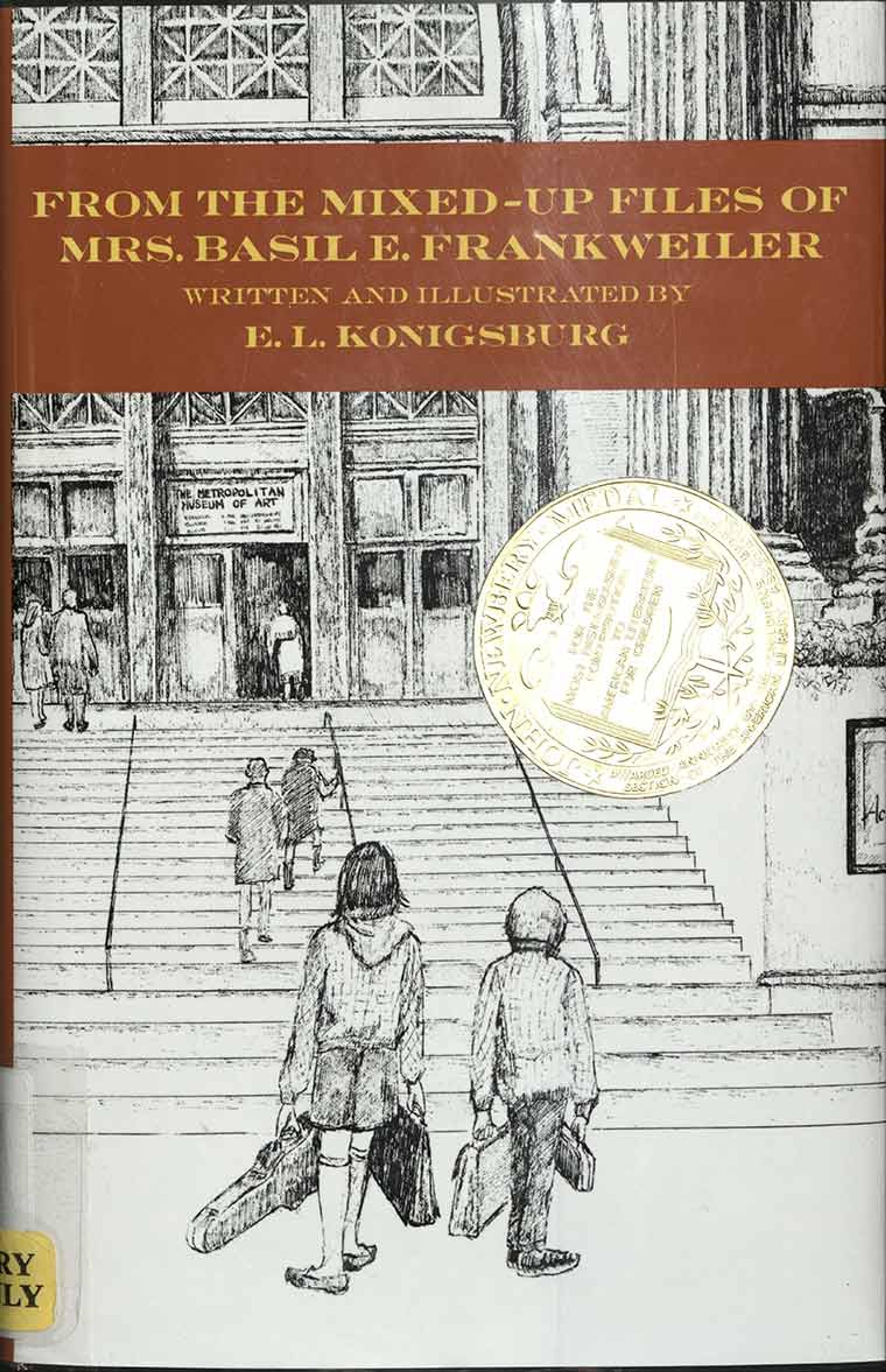
Front book cover from E. L. Konigsburg's From the Mixed-Up Files of Mrs. Basil E. Frankweiler (New York: Atheneum, c1967)
On a more entertaining note, Untermyer is mentioned in E. L. Konigsburg's From the Mixed-Up Files of Mrs. Basil E. Frankweiler (1967). This children's novel recounts the adventures of a sister and brother who hide out at The Met and spend the night on an antique bed, which the narrator—Frankweiler—describes as a gift from Untermyer.
If you have reached the end of this post, Marquand, Wolfe, Hearn, Altman, and Untermyer have now perhaps become household names. I hope this glimpse at just some of Watson Library's resources on these early Met collectors and their collections has enticed you to discover more.
For more in this series on the history of The Met's libraries, click here.
Deborah Vincelli
Deborah Vincelli was the instruction, French and Italian bibliographer, and online resources librarian in Thomas J. Watson Library.